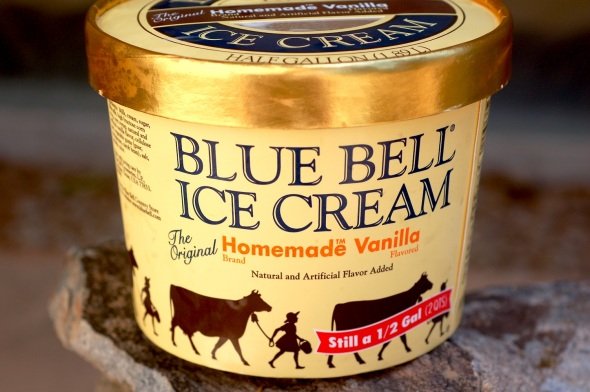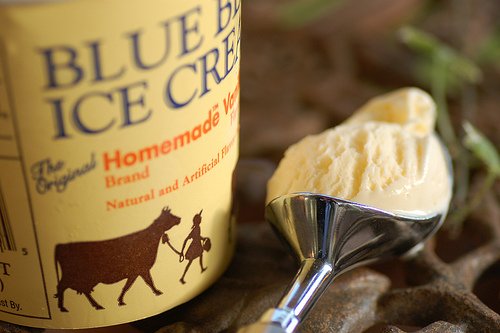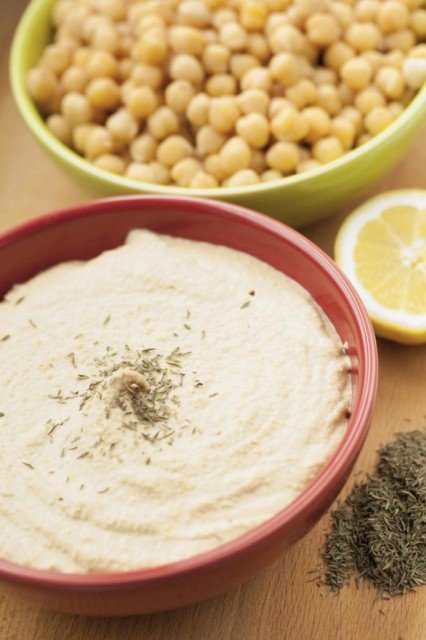Home Tags Posts tagged with "listeria"
listeria
Blue Bell Ice Cream has suspended operations at its Oklahoma plant after health officials linked the deaths of three people to contaminated ice cream.
“We are taking this step out of an abundance of caution to ensure that we are doing everything possible to provide our consumers with safe products and to preserve the trust we have built with them and their families for more than a century,” the company said in a statement on April 3.
Last month, Blue Bell and health officials said a 3-ounce cup of ice cream contaminated with listeriosis was traced to a plant in Broken Arrow, Oklahoma. The now-recalled ice cream product — cups of chocolate, strawberry and vanilla — is not sold in retail locations and is shipped in bulk to “institutional accounts” such as hospitals in 23 states that comprise less than 5% of the company’s sales.
“We recommend that consumers do not eat any Blue Bell brand products made at the company’s Oklahoma facility and that retailers and institutions do not sell or serve them,” the U.S. Centers for Disease Control and Prevention (CDC) said on April 3.
Ten products recalled earlier in March were from a production line at a plant in Brenham, Texas, the company’s headquarters.
The recall, the first in Blue Bell’s 108-year history, began when five patients at Via Christi St. Francis hospital in Wichita, Kansas, became ill with listeriosis while hospitalized at some point from December 2013 to January 2015. Officials determined at least four drank milkshakes that contained Blue Bell ice cream. Three of the patients later died.
Listeriosis is a life-threatening infection caused by eating food contaminated with bacteria called Listeria monocytogenes, according to the CDC. The disease primarily affects pregnant women, newborns, older adults and people with weakened immune systems.
The CDC also said on April 3 that it has identified six patients with listeriosis between 2010 and 2014 that was indistinguishable from that found in the 3-ounce cup ice cream product traced to the Oklahoma plant.
Four of the six patients were hospitalized in Texas for unrelated problems before developing listeriosis, according to the CDC.
The one patient for whom information is available reported eating ice cream in a Texas hospital before developing listeriosis and the Texas Department of State Health Services reported the hospital had received Blue Bell brand ice cream cups, the CDC said.
The “investigation to determine whether these illnesses are related to exposure to Blue Bell products is ongoing,” the CDC said.
Blue Bell said it will conduct a “careful and complete examination” of its Oklahoma plant “to determine the exact cause of the contamination.”
“Once our investigation is complete and we have made all necessary improvements, it will return to operation,” according to Blue Bell’s statement.
“Our other plants continue to operate and supply our products to retail stores and institutional customers.”
The FDA has been notified of Blue Bell’s decision to voluntarily shut down the plant, the company said.
In addition to the Broken Arrow plant, Blue Bell has two plants in Brenham and one in Sylacauga, Alabama.
The recalled ice cream had been shipped to Alabama, Arizona, Arkansas, Colorado, Florida, Georgia, Illinois, Indiana, Kansas, Kentucky, Louisiana, Mississippi, Missouri, Nevada, New Mexico, North Carolina, Ohio, Oklahoma, South Carolina, Tennessee, Texas, Virginia and Wyoming.
[youtube SbBAU67fKw4 650]
Some of Blue Bell ice creams have been recalled after three people died in Kansas from a foodborne illness linked to the Texas icon’s product.
This is Blue Bell’s first product recall in its 108-year history.
Five people, in all, developed listeriosis in Kansas after eating products from one production line at the Blue Bell creamery in Brenham, Texas, according to a statement on March 13 from the FDA.
The FDA says listeria bacteria were found in samples of Blue Bell Chocolate Chip Country Cookies, Great Divide Bars, Sour Pop Green Apple Bars, Cotton Candy Bars, Scoops, Vanilla Stick Slices, Almond Bars and No Sugar Added Moo Bars.
Blue Bell says its regular Moo Bars were untainted, as were its half gallons, quarts, pints, cups, three-gallon ice cream and take-home frozen snack novelties.
According to a statement from the CDC on march 13, all five of the people sickened were receiving treatment for unrelated health issues at the same Kansas hospital before developing listeriosis, “a finding that strongly suggests their infections (with listeria bacteria) were acquired in the hospital,” the CDC said.
Of those five, information was available from four on what foods they had eaten in the month before the infection. All four had consumed milkshakes made with a single-serving Blue Bell ice cream product called “Scoops” while in the hospital, the CDC said.
“Scoops,” as well as the other suspect Blue Bell items, are mostly food service items and not produced for retail, said Paul Kruse, CEO of the Brenham creamery.
The CDC said the listeria isolated from specimens taken from four of the five patients at Via Christi St. Francis hospital in Wichita, Kansas, matched strains from Blue Bell products obtained this year in South Carolina and Texas.
The five patients became ill with listeriosis during their hospitalizations for unrelated causes between December 2013 and January 2015, said hospital spokeswoman Maria Loving.
“Via Christi was not aware of any listeria contamination in the Blue Bell Creameries ice cream products and immediately removed all Blue Bell Creameries products from all Via Christi locations once the potential contamination was discovered,” Maria Loving said in a statement Friday to The Associated Press.
Via Christi has eight hospitals in Kansas and Oklahoma.
Blue Bell handles all of its own distribution and customer service, Paul Kruse said, so it moved to pull suspect products from shelves, as soon as it was alerted to the South Carolina contamination February 13. Paul Kruse did not suspect handling of those products after they left the Central Texas creamery.
“The only time it can be contaminated is at the time of production,” he said. That contamination has been traced to a machine that extrudes the ice cream into forms and onto cookies, and that machine remains off line, he said.
All products now on store and institution shelves are safe, Paul Kruse said.
“Contaminated ice cream products may still be in the freezers of consumers, institutions, and retailers, given that these products can have a shelf life of up to 2 years,” the CDC statement said. CDC recommends that consumers do not eat products that Blue Bell Creameries removed from the market, and institutions and retailers should not serve or sell them.
Listeriosis is a life-threatening infection caused by eating food contaminated with bacteria called Listeria monocytogenes, the CDC said. The disease primarily affects pregnant women and their newborns, older adults, and people with immune systems weakened by cancer, cancer treatments, or other serious conditions.
A person with listeriosis usually has fever and muscle aches, sometimes preceded by diarrhea or other gastrointestinal symptoms. Almost everyone who is diagnosed with listeriosis has invasive infection, meaning the bacteria spread from their intestines to the blood, causing bloodstream infection, or to the central nervous system, causing meningitis. Although people can sometimes develop listeriosis up to two months after eating contaminated food, symptoms usually start within several days. Listeriosis is treated with antibiotics, the CDC said.
Hidden germs like Salmonella, Listeria, E. coli, plus mold and yeast are lurking in your kitchen and have the potential to make you and your family very sick if you don’t know where to look.
Cheryl Luptowski, a Home Safety Expert at the National Sanitation Foundation International (NSF International) said: “People think that the bathroom is the dirtiest place in their house. When in fact the kitchen has the most germs.”
Cheryl Lupotowski and University of Arizona-Tucson Professor and Microbiologist Dr. Charles Gerba (AKA Dr. Germ) reveal the 10 dirtiest spots in the average home kitchen, plus expert advice on how to banish germs.
1. Sponges and Dishcloths
Microbe: E. coli
According to a study by the NSF, more than 75% of dish sponges and rags have some sort of coliform bacteria–a family of bacteria that includes Salmonella and E. coli and is an indicator of potential fecal contamination.
EXPERT ADVICE: Microwaving your sponges and dishcloths on high for about 30 seconds will kill most bacteria, according to Dr. Germ.
2. Sink
Microbe: E. coli
You may think that this is one of cleanest spots because everything gets washed in the sink. 45% of kitchen sinks were found to have coliform bacteria.
EXPERT ADVICE: Dr. Germ advises disinfecting the sink with a kitchen cleaner and just to be safe, don’t apply the 10 second rule when you drop food in the sink.
3. Refrigerator Vegetable Compartment
Microbes: Salmonella, Listeria, yeast and mold
“Dark moist environments tend to breed germs, even in the refrigerator. Produce should always be stored on a separate shelf above meat, poultry and seafood to avoid raw juices dripping onto the produce. First, avoid cross-contamination by separating ready-to-eat and unwashed produce. Also, keep them separate in your grocery cart, during food preparation, and when using kitchen tools and appliances,” said Cheryl Luptowski.

Hidden germs like Salmonella, Listeria, E. coli, plus mold and yeast are lurking in your kitchen
EXPERT ADVICE: To effectively clean the compartment, first remove the drawer from the refrigerator if possible. Cheryl Lupotowski advises washing the bin using a clean sponge or soft cloth and a mild detergent mixed with warm water. Rinse with tap water and wipe dry with a paper towel. To help control odors, use warm water mixed with a baking soda solution (about 1-2 tablespoons of baking soda to 1 quart of water). Rinse and wipe dry.
4. Refrigerator Meat Compartment
Microbes: Salmonella, E. coli, yeast and mold
This is another dark moist environment that’s a breeding ground for bacteria. Store meat and seafood on a separate shelf below produce to avoid raw juices from dripping onto the produce.
EXPERT ADVICE: “Clean monthly the same way you clean the vegetable compartment and whenever you see any spilled meat juices,” says Cheryl Lupotowski.
5. Cutting Board
Microbe: E. coli
In a study by the NSF, 18% of cutting boards were found to have coliform bacteria.
EXPERT ADVICE: Dr. Germ recommends using separate cutting boards: one for produce and one for meat, seafood, and poultry to avoid cross-contamination. Wash each one in hot soapy water and dry with a paper towel since bacteria thrive in moist environments.
6. Blender Gasket
Microbes: Salmonella, E. coli, yeast and mold
“Appliances and utensils that are not properly disassembled and cleaned can harbor microorganisms,” says Cheryl Luptowski.
EXPERT ADVICE: “To clean properly, completely disassemble the blender, removing the jar, lid, plus the blade and gasket at the bottom and place them all in the dishwasher after each use. If the pieces are not dishwasher safe, hand them thoroughly in hot soapy water, then rinse and dry before re-assembling,” says Cheryl Lupotwoski.
7. Kitchen Countertops
Microbe: E. coli
32% of kitchen countertops were found to have coliform bacteria, according to an NSF study.
EXPERT ADVICE: Wiping down countertops with dirty sponges and dishcloths increases the chance that this area will be a germ hot spot in your kitchen. Break out the kitchen disinfectant again and use disposable paper towels to clean up this area.
8. Can Opener
Microbes: Salmonella, E. coli, yeast and mold
Simply rinsing this tool isn’t enough to safeguard it from germs because it comes into direct contact with food.
EXPERT ADVICE: “To effectively clean, place the can opener in the dishwasher after each use (if dishwasher safe). If hand washing, wash in hot soapy water, rinsing thoroughly with clean tap water before air drying after each use. If hand washing, pay special attention to the area around the cutting blades to be sure all food residue is removed,” says Cheryl Luptowski.
9. Rubber Spatula
Microbes: E. coli, yeast and mold
For two-piece spatulas, it’s important to separate the handle from the spatula portion before cleaning.
EXPERT ADVICE: “If they are dishwasher safe, place both sections in the machine after each use. If hand washing, wash in hot soapy water, rinsing thoroughly with clean water. For one-piece spatulas, hand wash it thoroughly in hot soapy water, paying special attention to the area where the handle joins the spatula. Rinse thoroughly and dry,” says Cheryl Luptowski.
10. Food Storage Container with Rubber Seal
Microbes: Salmonella, yeast and mold
Containers that have not been cleaned thoroughly have high counts of yeast and mold which may make food spoil quickly.
EXPERT ADVICE: “If dishwasher safe, place both the container and the lid in the dishwasher and wash after each use. If hand washing, wash both the container and lid in hot soapy water, paying special attention to the area around the seal as well as any grooves where the cover attaches to the container. Rinse thoroughly and allow to air dry,” says Cheryl Lupotowski.
Salmonella: “Within 8 to 12 hours after eating a contaminated food item, a person may develop abdominal pain and diarrhea, and sometimes nausea and vomiting. Symptoms generally last a day or less, but can be more serious in older or debilitated people,” says Cheryl Lupotowski.
Listeria: “Within 7 to 30 days after eating a contaminated food item, a person may develop symptoms including fever, headache, nausea and vomiting. Listeria primarily affects pregnant women and their fetuses, newborns, the elderly, people with cancer, and those with impaired immune systems. Can cause fetal and infant death,” says Cheryl Lupotowski.
E. coli: “Within 2 to 5 days after eating a contaminated food item, a person may develop severe diarrhea (possibly bloody) and abdominal cramps. Usually little or no fever is present, and the illness resolves in 5 to 10 days,” says Cheryl Lupotowski.
Food companies Sherman Produce and Lansal have issued voluntary recalls of walnuts and hummus dips sold at major retailers after Listeria was detected in a sampling of the products, the FDA said on Thursday.
The recalls come weeks after Wal-Mart settled lawsuits with the families of 23 people who died from a 2011 Listeria outbreak linked to cantaloupe grown at a Colorado farm and sold by the retailer.

Lansal voluntarily pulls hummus and dip products sold at Target, Trader Joe’s and other retailers over possible Listeria contamination
St. Louis-based Sherman Produce Co said it would begin recalling 241 cases of bulk walnuts, after a recent routine sampling of the product purchased by stores in Missouri and Illinois revealed traces of Listeria, the FDA said in a statement.
Massachusetts prepared foods manufacturer Lansal Inc, commonly known as Hot Mama’s Foods, said it would voluntarily pull hummus and dip products sold at Target, Trader Joe’s and other retailers, the administration said.
Lansal launched the recall of about 14,860 pounds of hummus after a single 10-ounce container of Target Archer Farms Traditional Hummus surveyed by the Texas Department of Health tested positive for Listeria, the administration said.
Listeria monocytogenes can lead to serious, even fatal, infections especially in young children, the elderly and those with weakened immune systems. Infections can have particularly harmful effects for pregnant women, including miscarriage and stillbirths.
No illnesses tied to the Sherman Produce walnuts or Lansal hummus products have been reported, the FDA said.
The FDA urged purchasers of the products to “dispose of them or return them to the place of purchase for a full refund”.
[youtube N2msI-p1iLU 650]




